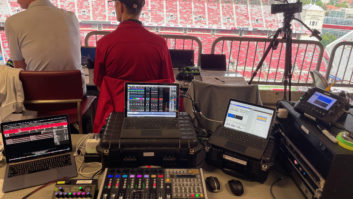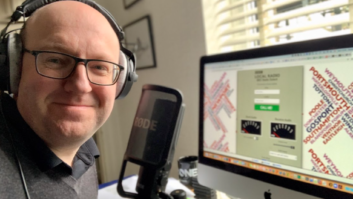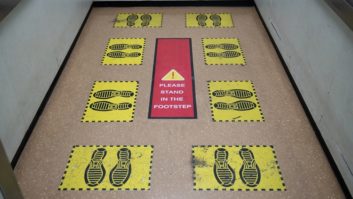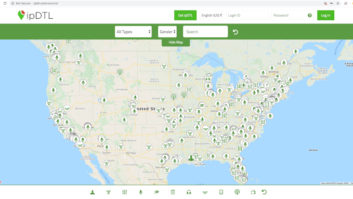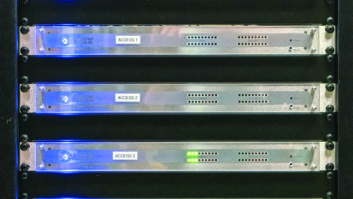Here’s What Telcos, Codec Manufacturers Have to Say About the Replacement of ISDN by IP Audio
Beginning around 1995, Integrated Services Digital Network revolutionized remote broadcast technology by enabling affordable, high-quality stereo dial-up connections. How quickly things change.
Recently, there have been indications that telcos are becoming reluctant to install and support ISDN circuits. The service is being displaced by faster, cheaper and simpler broadband services such as xDSL and cable modems. IP audio is the buzzword. Satellite and wireless technologies also are being touted as potential replacements.
How much longer will ISDN be around, and what comes next?
Industry feedback
Kevin Webb, general manager of Tieline America, said customer feedback suggests a shift away from ISDN is well under way.
“Our customers tell us it is getting more difficult to get ISDN lines installed, and in some cases requests are turned down,” he said. “It also is getting harder to get tech support from the phone company for ISDN circuits.” He said the advantages of newer technologies also are a driving force.
David Lin, director of sales and marketing at Musicam USA, still sees strong demand from customers for ISDN. “About 95 percent of our customers depend on ISDN for remotes,” he said. “We’re seeing an increase in the use of IP audio for permanent connections, but the technology will have to become more reliable in order for on-demand service to grow.”
He said that in developing nations such as China, the telcos are bypassing ISDN altogether and installing newer technologies.
Rolf Taylor, product manager of telephony at Telos Systems, sees a similar decline in Europe.
“ISDN isn’t going away anytime soon, but getting circuits overseas will become harder, slower and more expensive as time goes on,” Taylor said.
At Comrex Corp., Vice President of Development Kris Bobo said research for new product development is directed towards IP audio gear.
“With techniques such as forward error correction and dynamic delay scaling, we’ve made great strides in getting the technology to perform well over the public Internet.” She anticipates a day when POTS codecs no longer work because IP audio circuits will be more cost-effective for the telcos to maintain.
Bobo echoes comments by others about declining service, adding that the problem seems to be worse on the East Coast.
“ISDN has gone through a complete cycle. About 10 years ago, many telco salespeople didn’t even know what ISDN was,” she said. “Then things got better. Now we’re back to having to explain it to the phone company.”
She urges customers to hold on to ISDN circuits as long as possible, saying their great asset is the guaranteed quality of service, something that is not easy to obtain with Internet-based technologies.
Apple crunch
The ISDN crunch is being felt in the Big Apple. Tom Ray, corporate director of engineering for Buckley Broadcasting/WOR(AM) in New York and a contributor to Radio World, said real problems began about six months ago, when it became difficult to get new lines installed.
“We were told by Verizon that banks and broadcasters were the only users of ISDN service, and that ISDN would not be part of Verizon’s upgrades to central offices,” he said. Verizon added that there would be a 60-day minimum wait for new service.
Getting good tech support on existing ISDN circuits has become more difficult. Ray cited an incident when lines at WOR were being dropped repeatedly. The problem eventually was fixed but only after much debate among the many Verizon technicians who were involved.
While many stations seem to be having difficulties with ISDN, Jim Smith, media relations representative for Verizon, said that ISDN continues to be a viable service for his company and there are no plans to discontinue it.
While there seems to be an evolution towards IP audio via the Internet for remotes, Taylor of Telos urges users to proceed with caution.
“Over-provisioning bandwidth is not the same thing as guaranteed quality of service,” he said. “An Internet connection may work well for a day, a week or a month, and then not work. Broadcasters need to understand that risk.”
Making the switch
Some telcos are gearing up for IP audio. Sprint recently upgraded from DMS-100 switches to Nortel Communication Server 2000 softswitches in Las Vegas, and area stations have noticed no change. Many stations and networks used the Las Vegas circuits for live remotes from the Radio Music Awards in December, with no problems.
Webb of Tieline said broadcasters need to take certain steps before jumping into IP audio remotes.
First, make sure the studio connection has a permanent IP address. These are available from a reputable ISP or professional IT organization.
Next, perform the Network Address Translation between the public Internet and the station’s LAN. Following installation of the NAT, the studio codec can be connected. If the station has a DHCP-enabled network, the codec will be assigned a private extension number. The station’s public IP address will then be routed to this private IP address through the NAT configuration.
Make sure there is a dedicated IP connection for the remote codec, or shape the network with a Virtual Private Network. Set aside a pipeline for the incoming call to be routed to the IP codec, so the IP audio is not molested by other traffic on the station’s LAN.
Engineers who are setting up remotes with IP audio may need to acquire additional skills and training. Taylor elaborated: “Having general IP skills is a given. Beyond that, understanding port forwarding is important, especially if you’re operating behind a firewall.” He said users should understand firewall and router technology.
“Become familiar with basic protocol analysis software,” he said, “although in some instances these tools are built into the codec.” Taylor recommends Ethereal, an analysis program available for free download at www.ethereal.com
Alternatives, options
While DSL is one logical choice to replace ISDN, other technologies are available or about to come online.
Satellite terminals are an option. The combination of high hardware costs and connect charges have limited their use in the past to disaster areas or developing nations where there are no alternatives.
More recently, hardware costs have fallen, and connect charges for BGAN service averages about $2.10 per minute. A typical setup would involve making a connection from the codec’s high-speed data port to the satellite terminal. Some satellite terminals have a direct ISDN interface.
As “hotspots” are becoming more common in bookstores, coffee shops, airports and public places, WiFi is an attractive medium for remotes, and pioneers with this service report good success. Access in many locations is free, others have a subscription model averaging $6-$10, depending on the plan. Connections are usually stable, with delays ranging from 100-200 mS, not much different than a POTS codec.
While WiFi remotes must be confined to hotspots, the upcoming WiMAX service is expected to cover a radius of 30 miles, although initial test results haven’t been quite this good.
New technologies may expand the potential for satellite remotes. Connexion by Boeing has developed antennas and equipment that enable high-speed airborne Internet access to commercial aircraft. Recent tests with Comrex Broadcast Reliable Internet Codec technology have verified the ability to broadcast IP audio from planes in flight. Signals are transmitted from the plane to an earth station via a Ku-band satellite.
Inmarsat’s new Broadband Global Area Network (BGAN) also may be adopted for broadcast remotes. The mobile service provides both voice and broadband data simultaneously on a global basis. Guaranteed data rates are available on demand.
Sometimes the simplest and cheapest options are overlooked. Taylor said that if audio doesn’t have to arrive in real time, a simple file transfer may be all that is needed. An option frequently overlooked by broadcasters is Skype, a proprietary peer-to-peer Internet (VoIP) network. The software is a free download, and Skype users can talk with each other worldwide for free. There is a fee for calls to and from traditional phones.
What’s ahead for ISDN and for radio remotes? Comment on this or any article to [email protected].






